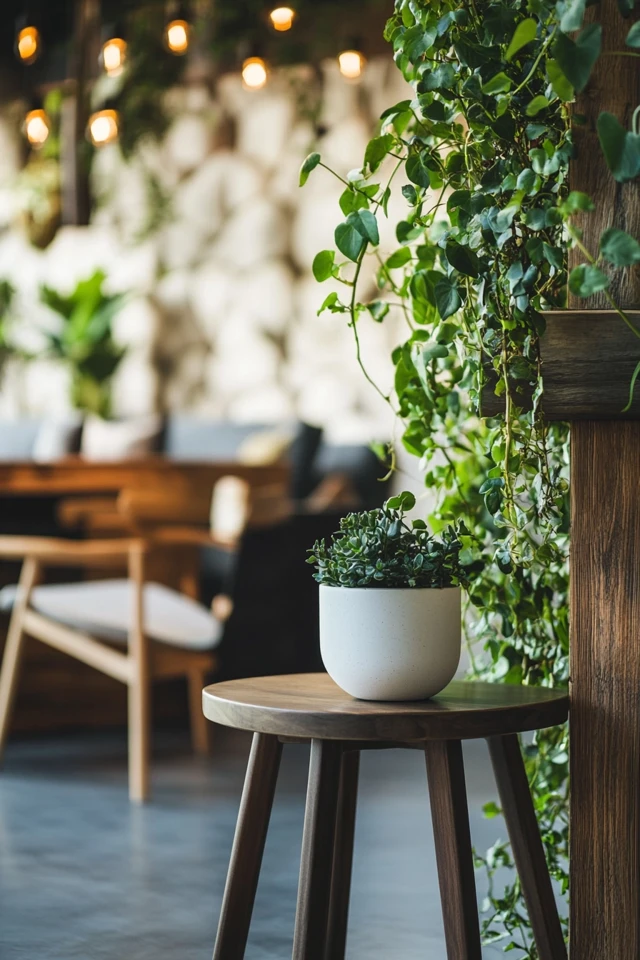Sustainability and aesthetics go hand in hand—at least, that’s what I’ve discovered over the years of designing and redesigning spaces for myself and my clients. I still vividly remember the moment this clicked for me. A few years ago, I worked with a client who wanted a stunning, Instagram-worthy room but was adamant about using only eco-friendly materials. At first, I thought this might limit creativity, but instead, it unleashed a whole new level of innovation. From repurposing vintage furniture to sourcing non-toxic paint, we created a space that was not only breathtakingly beautiful but also kind to the planet.
That project changed the way I approach design. It taught me that going green doesn’t mean compromising on style—in fact, it often makes a space feel more thoughtful, intentional, and full of personality. Sustainability is no longer just a buzzword; it’s a design philosophy that blends environmental responsibility with timeless, personal beauty.
In this guide, I’m sharing my favorite eco-friendly tips to design an aesthetic room that’s good for you and the planet. Whether you’re starting fresh or just looking to make small sustainable changes, you’ll find actionable ideas to help you craft a space that reflects your style and your values.
Why Choose Sustainable Design for Your Room?
1. Protecting the Planet
Every design choice we make—whether it’s the paint on our walls or the materials in our furniture—has an environmental impact. Sustainable design minimizes waste, reduces energy consumption, and preserves natural resources.
2. Healthier Living Spaces
Many conventional materials and finishes release harmful toxins into the air (like volatile organic compounds, or VOCs). Eco-friendly options are safer, creating a healthier environment for you and your loved ones.
3. Timeless Aesthetic Appeal
Sustainable design often incorporates high-quality, durable materials. Not only do these last longer, but they also have a timeless appeal that won’t go out of style. Think natural wood grains, organic textiles, and earthy color palettes.
Choosing Sustainable Materials
1. Opt for Natural and Renewable Resources
- Bamboo: Fast-growing and incredibly versatile, bamboo is perfect for flooring, furniture, and even décor like blinds.
- Reclaimed Wood: Using salvaged wood for shelves, tables, or headboards adds character while reducing deforestation.
- Organic Textiles: Choose bedding, curtains, and upholstery made from organic cotton, linen, or hemp.
2. Prioritize Low-Impact Finishes
- Non-Toxic Paints and Stains: Look for brands offering low-VOC or zero-VOC paints to improve indoor air quality.
- Natural Sealants and Oils: Use linseed oil or beeswax as an alternative to synthetic finishes for wood furniture.
3. Recycled and Upcycled Materials
- Recycled Glass: Perfect for tabletops, vases, or decorative accents.
- Upcycled Fabrics: Use scraps of fabric to make throw pillows, patchwork quilts, or DIY wall hangings.
Sustainable Furniture Choices
1. Buy Secondhand or Vintage
There’s nothing quite like the charm of vintage furniture. It’s unique, often better constructed, and prevents perfectly good pieces from ending up in landfills. Websites like Facebook Marketplace, Craigslist, or local thrift stores are treasure troves for one-of-a-kind finds.
2. Look for FSC-Certified Wood
The Forest Stewardship Council (FSC) certification ensures that the wood used in furniture has been harvested sustainably. This is a great option for new purchases if you can’t find secondhand.
3. Modular and Multifunctional Pieces
Invest in furniture that adapts to your needs, like a bed with built-in storage or a table that expands. This reduces the need to buy additional pieces in the future, minimizing waste.
Energy-Efficient Design Ideas
1. Embrace Natural Light
- Keep windows unobstructed and use light-colored, airy curtains to maximize daylight in your room.
- Strategically place mirrors to reflect natural light and brighten up darker corners.
2. Switch to LED Lighting
LED bulbs use up to 75% less energy than incandescent bulbs and last significantly longer. Plus, they’re available in various color temperatures to suit any aesthetic.
3. Add Smart Lighting
Install smart plugs or bulbs to control lighting schedules and reduce unnecessary energy consumption. You can even set the mood with dimming features!
Eco-Friendly Décor Tips
1. Decorate with Plants
- Plants improve air quality and add a natural, vibrant touch to your room. Choose low-maintenance varieties like pothos, snake plants, or succulents if you’re not a seasoned plant parent.
- Use terracotta pots, macramé hangers, or even recycled containers for a creative, eco-friendly twist.
2. DIY Décor Projects
- Macramé Wall Hangings: Made from natural cotton cords, these add a boho aesthetic to your space.
- Repurposed Jars: Use mason jars as vases, pencil holders, or lanterns by adding fairy lights.
- Cork Boards: Recycle wine corks to create a functional and aesthetic pinboard.
3. Choose Timeless Designs
Avoid trendy décor items that may feel dated quickly. Instead, invest in timeless pieces that you’ll love for years to come. This reduces the cycle of constant buying and disposing.
Picture Gallery
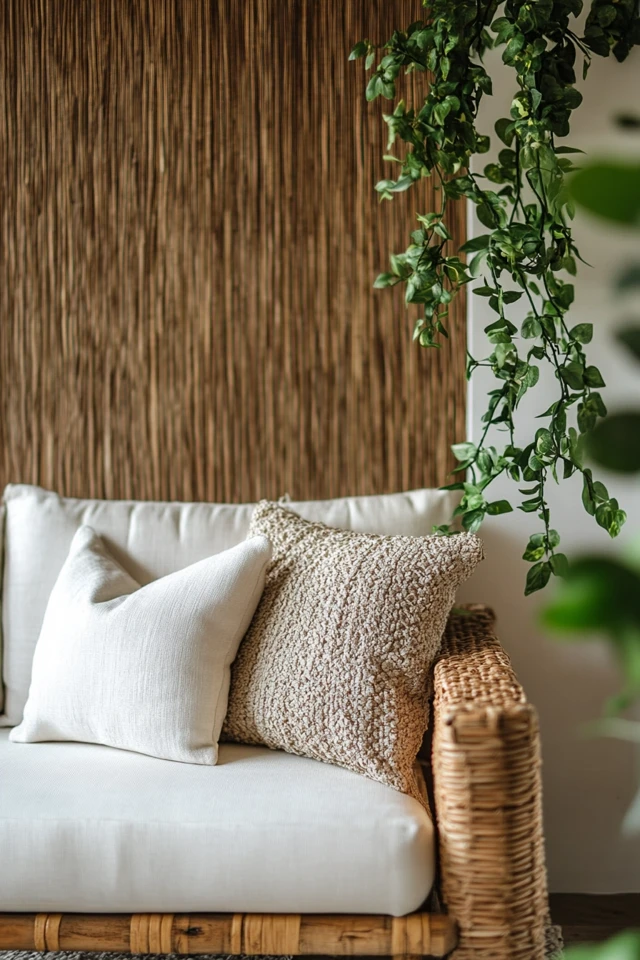
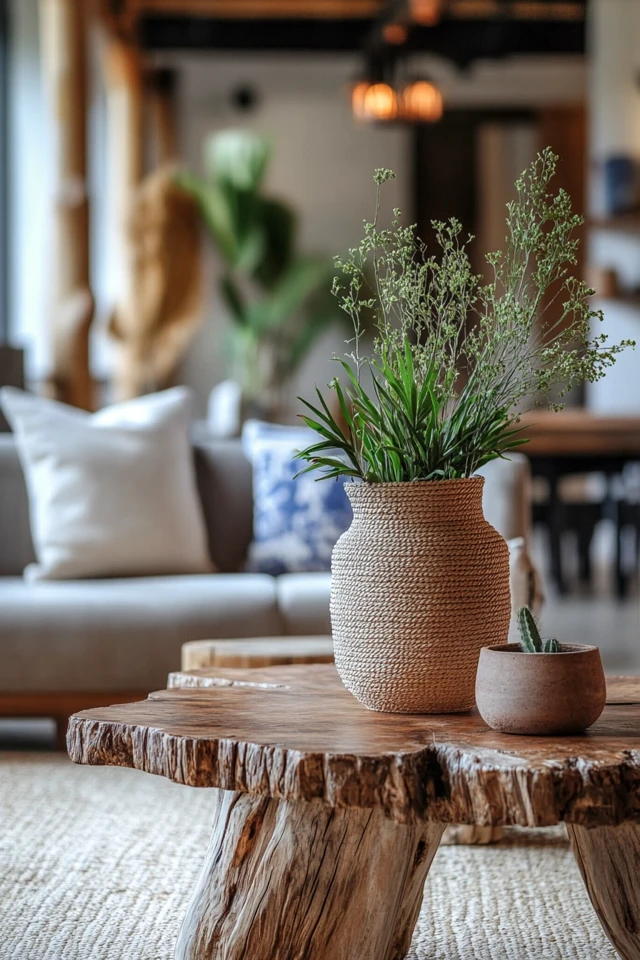
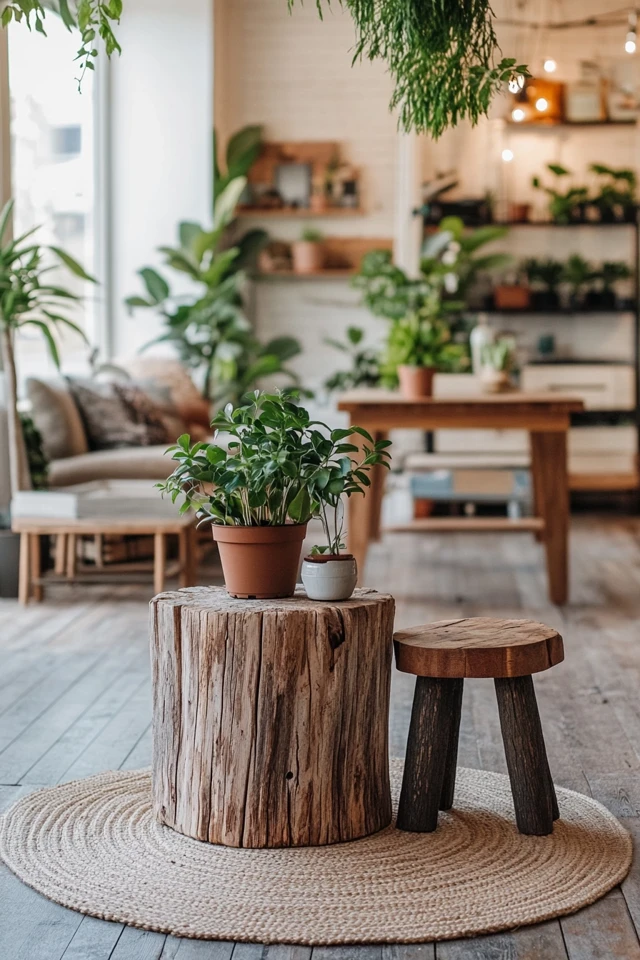
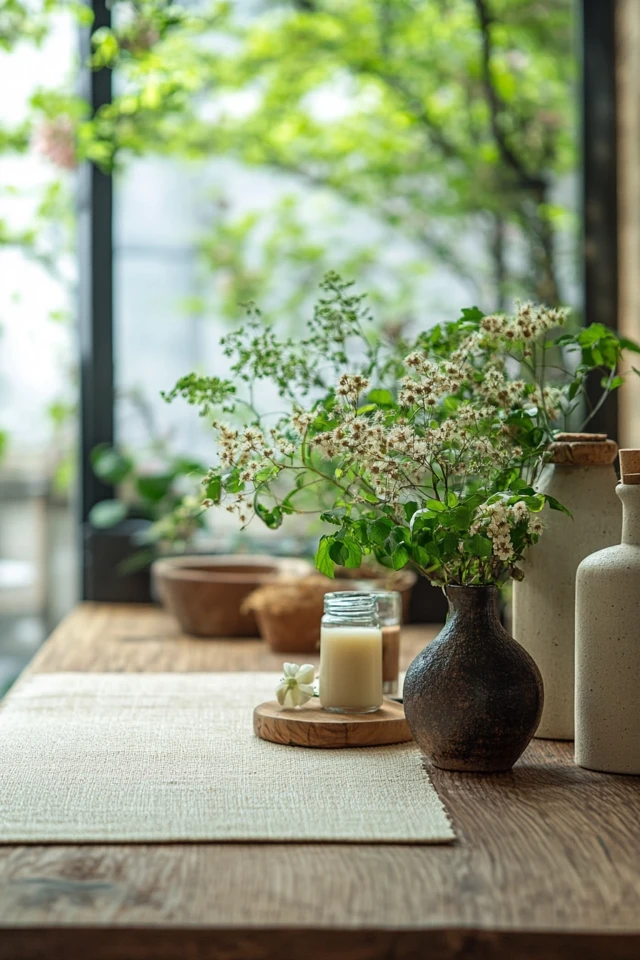
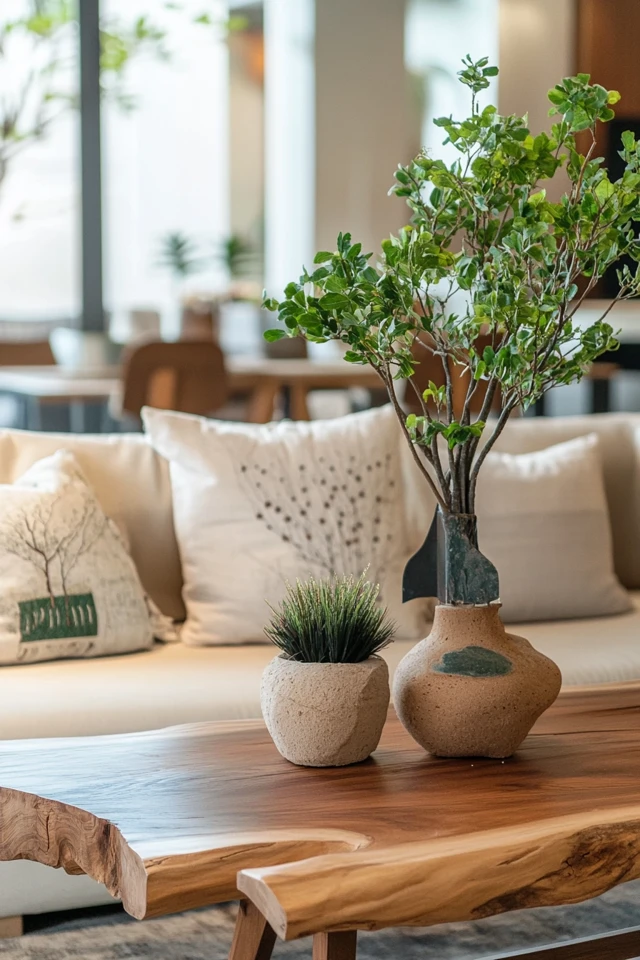
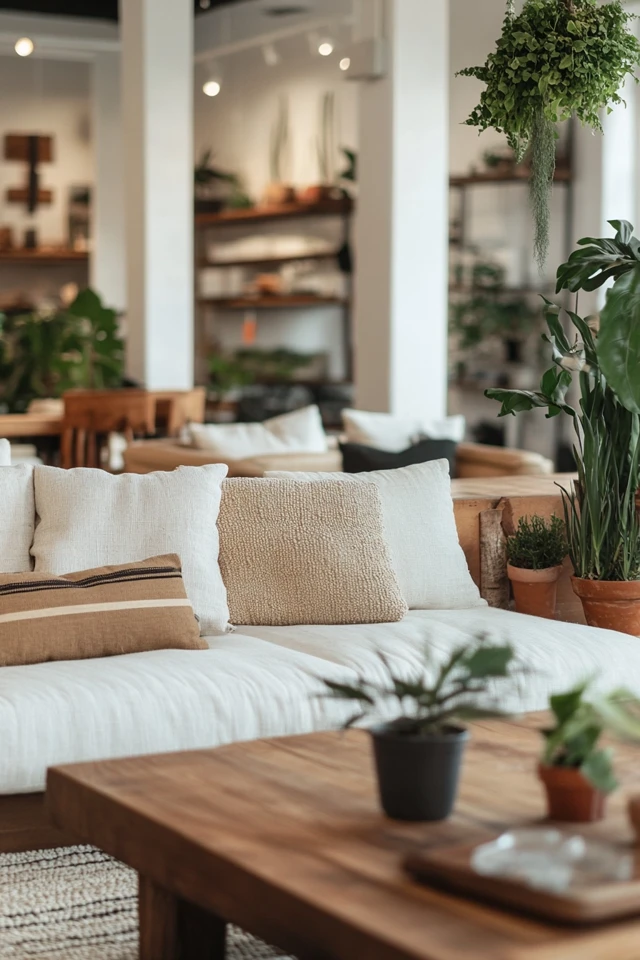
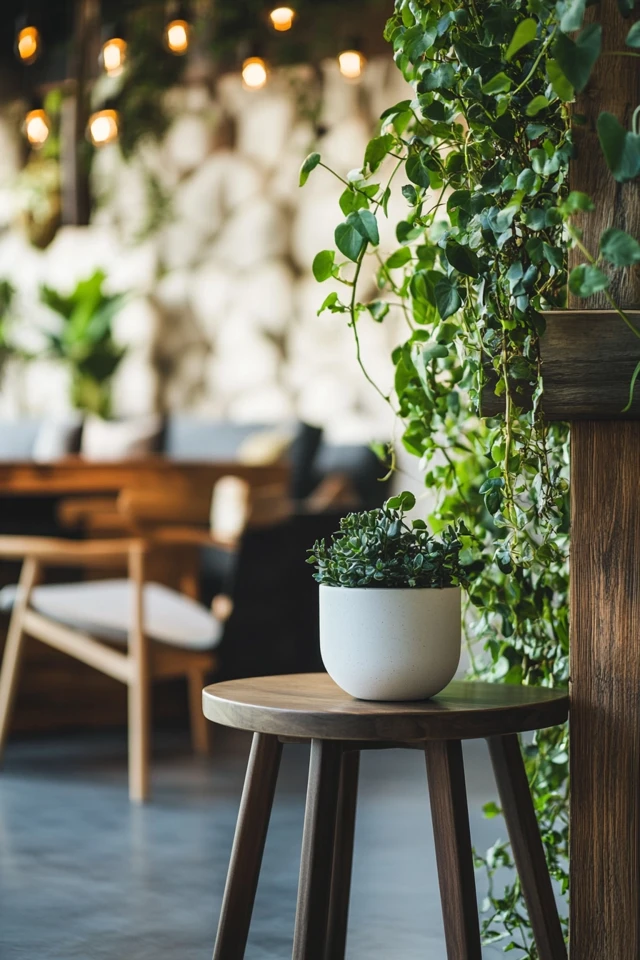
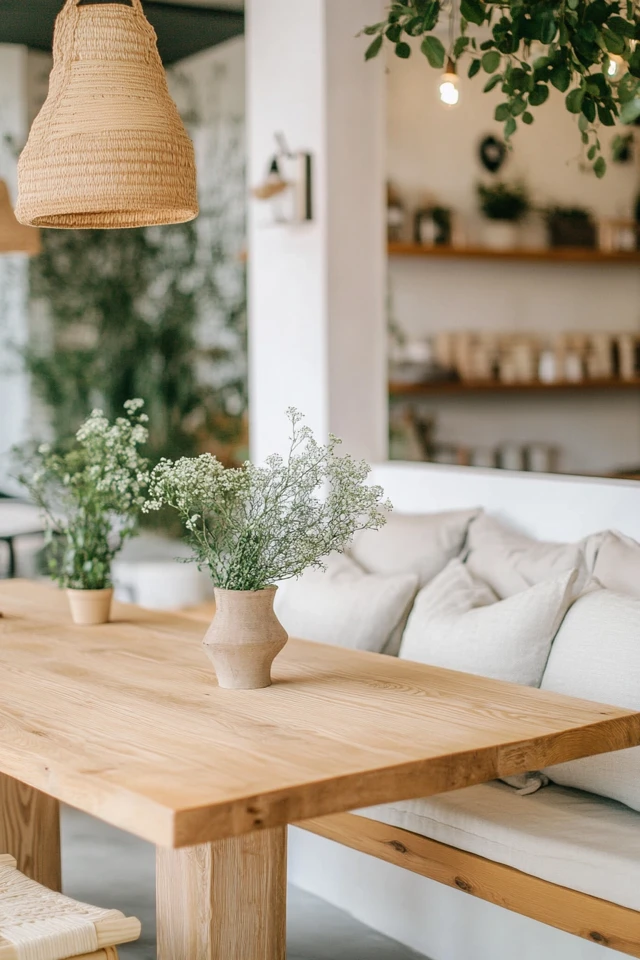
Sustainable Color Palettes and Patterns
1. Nature-Inspired Tones
Choose colors that reflect the natural world, such as:
- Earthy greens and browns for a grounding effect.
- Ocean blues for a calming atmosphere.
- Soft beiges and whites for an airy, open feel.
2. Patterns with Purpose
Opt for patterns inspired by nature, like botanical prints, geometric designs based on natural forms, or subtle textures like linen weaves.
Upcycling Tips to Revamp Your Space
1. Refresh Old Furniture
- Sand and repaint a dresser with eco-friendly paint for a completely new look.
- Swap out old hardware (like knobs and handles) with sustainable, stylish options.
2. Repurpose Everyday Items
- Turn an old ladder into a stylish bookshelf or blanket rack.
- Use vintage crates as storage or stack them to create a unique shelving unit.
3. Reimagine Fabrics
- Sew old clothes or fabric scraps into cushion covers or quilts.
- Use leftover wallpaper or wrapping paper to line the backs of shelves for a pop of color.
Conclusion
Designing an eco-friendly aesthetic room isn’t just about following trends; it’s about creating a space that resonates with your values while being visually stunning. Sustainability doesn’t limit your creativity—it enhances it. When you choose to reuse, repurpose, and prioritize natural materials, your room gains a unique charm that no mass-produced product can replicate.
Looking back, some of the most beautiful and meaningful spaces I’ve designed have been the ones with a strong eco-conscious foundation. The textures feel more authentic, the air smells cleaner, and the room tells a story of care and consideration. And the best part? You’ll feel a deeper connection to your space, knowing you’ve made thoughtful choices that benefit the planet.
So, start small—replace a single piece of furniture, upcycle an old item, or bring in a potted plant. Watch how these seemingly minor changes add up, transforming not just your room but your mindset. Ready to embrace the beauty of sustainable design? Trust me, you won’t look back.
FAQs
1. What are the best eco-friendly materials for furniture?
Bamboo, reclaimed wood, FSC-certified wood, and rattan are excellent eco-friendly options for furniture.
2. How can I reduce waste when decorating my room?
Shop secondhand, repurpose existing items, and opt for décor made from recycled or upcycled materials.
3. Are there affordable ways to design an eco-friendly room?
Absolutely! Thrift stores, DIY projects, and small changes like switching to LED lighting are all budget-friendly ways to go green.
4. How do I make my room more energy-efficient?
Use natural light, switch to LED bulbs, and invest in smart plugs or timers to control energy usage.
5. Are indoor plants really eco-friendly?
Yes! Plants not only purify the air but also reduce the need for energy-intensive air fresheners and add natural beauty to your space.

